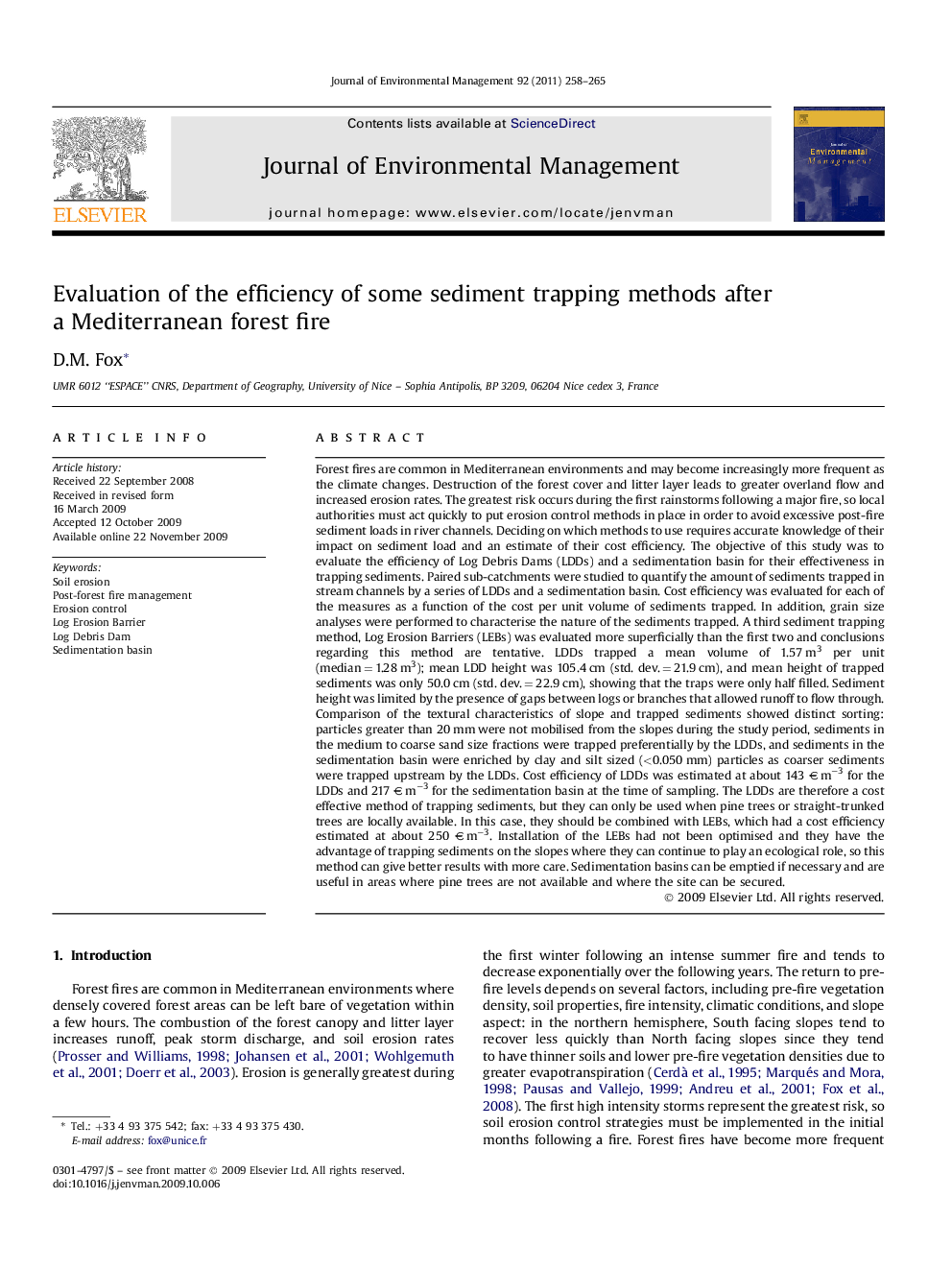| کد مقاله | کد نشریه | سال انتشار | مقاله انگلیسی | نسخه تمام متن |
|---|---|---|---|---|
| 1057422 | 947075 | 2011 | 8 صفحه PDF | دانلود رایگان |

Forest fires are common in Mediterranean environments and may become increasingly more frequent as the climate changes. Destruction of the forest cover and litter layer leads to greater overland flow and increased erosion rates. The greatest risk occurs during the first rainstorms following a major fire, so local authorities must act quickly to put erosion control methods in place in order to avoid excessive post-fire sediment loads in river channels. Deciding on which methods to use requires accurate knowledge of their impact on sediment load and an estimate of their cost efficiency. The objective of this study was to evaluate the efficiency of Log Debris Dams (LDDs) and a sedimentation basin for their effectiveness in trapping sediments. Paired sub-catchments were studied to quantify the amount of sediments trapped in stream channels by a series of LDDs and a sedimentation basin. Cost efficiency was evaluated for each of the measures as a function of the cost per unit volume of sediments trapped. In addition, grain size analyses were performed to characterise the nature of the sediments trapped. A third sediment trapping method, Log Erosion Barriers (LEBs) was evaluated more superficially than the first two and conclusions regarding this method are tentative. LDDs trapped a mean volume of 1.57 m3 per unit (median = 1.28 m3); mean LDD height was 105.4 cm (std. dev. = 21.9 cm), and mean height of trapped sediments was only 50.0 cm (std. dev. = 22.9 cm), showing that the traps were only half filled. Sediment height was limited by the presence of gaps between logs or branches that allowed runoff to flow through. Comparison of the textural characteristics of slope and trapped sediments showed distinct sorting: particles greater than 20 mm were not mobilised from the slopes during the study period, sediments in the medium to coarse sand size fractions were trapped preferentially by the LDDs, and sediments in the sedimentation basin were enriched by clay and silt sized (<0.050 mm) particles as coarser sediments were trapped upstream by the LDDs. Cost efficiency of LDDs was estimated at about 143 € m−3 for the LDDs and 217 € m−3 for the sedimentation basin at the time of sampling. The LDDs are therefore a cost effective method of trapping sediments, but they can only be used when pine trees or straight-trunked trees are locally available. In this case, they should be combined with LEBs, which had a cost efficiency estimated at about 250 € m−3. Installation of the LEBs had not been optimised and they have the advantage of trapping sediments on the slopes where they can continue to play an ecological role, so this method can give better results with more care. Sedimentation basins can be emptied if necessary and are useful in areas where pine trees are not available and where the site can be secured.
Journal: Journal of Environmental Management - Volume 92, Issue 2, February 2011, Pages 258–265